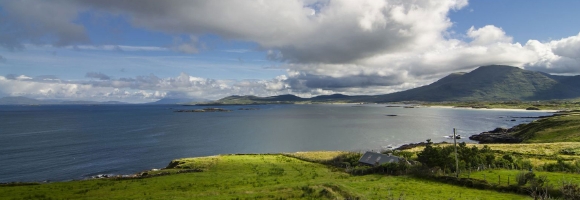What Type Of Gas Supply Do I Need?
How to choose between cylinders and bulk tank gas
This depends primarily on what gas equipment you wish to use. The following are general guidelines will be of assistance, but please remember that if you contact Flogas we can work out what you will need.
Butane Cylinder
Cabinet heaters (Super-Ser is the most widely known brand) have a built-in enclosure to take a standard size Butane cylinder. Domestic cookers can also be fed from a standard size Butane cylinder.
Propane Cylinder
 The next step up in terms of gas supplies are propane cylinders located outdoors connected to an automatic changeover regulator. In the case of a two-cylinder changeover regulator, both cylinders are connected up and left turned on. The regulator will draw gas from one of these cylinders, and when that empties, it will automatically switch over to the other "reserve" cylinder. It's indicator will change from white to red to indicate that it has changed to the reserve cylinder, so that you may contact your local dealer who will call and replace the cylinder for you.
The next step up in terms of gas supplies are propane cylinders located outdoors connected to an automatic changeover regulator. In the case of a two-cylinder changeover regulator, both cylinders are connected up and left turned on. The regulator will draw gas from one of these cylinders, and when that empties, it will automatically switch over to the other "reserve" cylinder. It's indicator will change from white to red to indicate that it has changed to the reserve cylinder, so that you may contact your local dealer who will call and replace the cylinder for you.
Two-cylinder automatic changeover regulators are used for gas fires. Four or six cylinder automatic changeover regulators are used for domestic central heating systems (depending on the size of the apartment / house). Domestic central heating systems can also be fed from a 250 gallon bulk tank (delivered into by a gas tanker from Flogas).
Bulk Gas
 For restaurants, hotels, commercial and industrial users, the issue is somewhat more complicated. An estimate of the average usage per working hour and per week needs to be made. The usage per hour is needed because the different tank sizes have a limit as to how much gas they can supply (they can supply considerably more than this over shorter periods, but it is the average usage that is the limiting factor). For this purpose, and as a rough guide, the average gas usage of radiant heaters is 100% of their input rating; for other heating and water heating applications it is 50% of the input rating; for catering equipment it is 22% of the input rating. The input rating is both marked on the equipment and on the manufacturer's brochures. In case of difficulty, the manufacturer or Flogas should be able to help determine the average usage. You then need to estimate from the table below what storage you need to supply this usage. Generally, you should keep the number of cylinders to a maximum of twelve and the number of tanks to a maximum of six in picking your choice.
For restaurants, hotels, commercial and industrial users, the issue is somewhat more complicated. An estimate of the average usage per working hour and per week needs to be made. The usage per hour is needed because the different tank sizes have a limit as to how much gas they can supply (they can supply considerably more than this over shorter periods, but it is the average usage that is the limiting factor). For this purpose, and as a rough guide, the average gas usage of radiant heaters is 100% of their input rating; for other heating and water heating applications it is 50% of the input rating; for catering equipment it is 22% of the input rating. The input rating is both marked on the equipment and on the manufacturer's brochures. In case of difficulty, the manufacturer or Flogas should be able to help determine the average usage. You then need to estimate from the table below what storage you need to supply this usage. Generally, you should keep the number of cylinders to a maximum of twelve and the number of tanks to a maximum of six in picking your choice.
In addition to this requirement, we recommend that you need enough storage to supply you for two weeks in the case of cylinders and three weeks in the case of tanks. You may need to increase your previous estimate to take account of this.
Container Size
| Storage Capacity | Maximum Usage Per Hour | |
|---|---|---|
| 75lb propane cylinder | 23.5 kW (80,000 Btu/hr) | 490 kW hr (1,680,000 Btu) |
| 104lb propane cylinder | 23.5 kW (80,000 Btu/hr) | 680 kW hr (2,330,000 Btu) |
| Half tonne tank | 128 kW (440,000 Btu/hr) | 7,020 kW hr (24,000,000 Btu) |
| One tonne tank | 170 kW (580,000 Btu/hr) | 14,040 kW hr (48,000,000 Btu) |
| Two tonne tank | 317 kW (1,080,000 Btu/hr) | 28,080 kW hr (96,000,000 Btu) |
| Four tonne tank | 522 kW (1,780,000 Btu/hr) | 56,160 kW hr (192,000,000 Btu) |
| Larger tanks | Consult Flogas | |
There are different regulatory space requirements for the above options, and for assistance on this, please consult the Guide for Bulk LPG Tank Separation Distances.
It is obvious that the above is complicated and the optimum solution is far from obvious. You may also find that you do not appear to have the space to accomodate your requirements. Flogas have trained staff and countrywide representatives who can solve your problem over the telephone or by a site visit if necessary, and we would be glad to help - please do contact Flogas.

